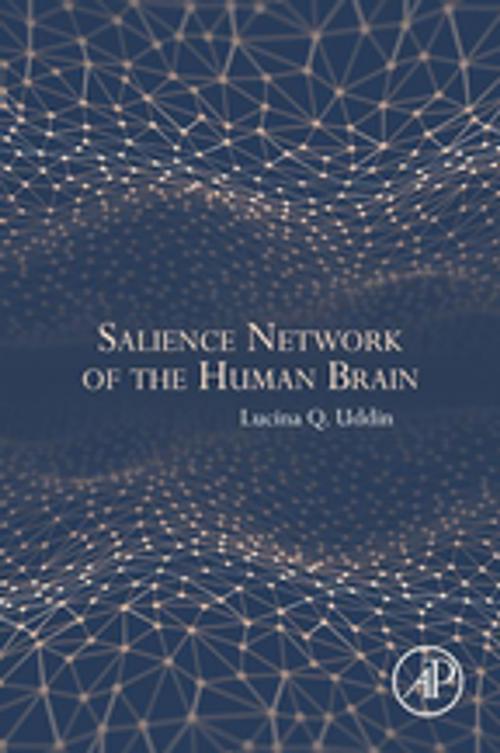Salience Network of the Human Brain
Nonfiction, Health & Well Being, Medical, Specialties, Internal Medicine, Neurology, Science & Nature, Science, Biological Sciences| Author: | Lucina Q. Uddin | ISBN: | 9780128045947 |
| Publisher: | Elsevier Science | Publication: | August 24, 2016 |
| Imprint: | Academic Press | Language: | English |
| Author: | Lucina Q. Uddin |
| ISBN: | 9780128045947 |
| Publisher: | Elsevier Science |
| Publication: | August 24, 2016 |
| Imprint: | Academic Press |
| Language: | English |
Salience Network of the Human Brain focuses on the multiple sources of stimuli that compete for our attention, providing interesting discussions on how the relative salience—importance or prominence—of each of these inputs determines which ones we choose to focus on for more in-depth processing.
The salience network is a collection of regions of the brain that select which stimuli are deserving of our attention. The network has key nodes in the insular cortex and is critical for detecting behaviorally relevant stimuli and for coordinating the brain’s neural resources in response to these stimuli. The insular cortex is a complex and multipurpose structure that plays a role in numerous cognitive functions related to perception, emotion, and interpersonal experience—and the failure of this network to function properly can lead to numerous neuropsychiatric disorders, including autism spectrum disorder, psychosis, and dementia.
- Presents the only publication available that summarizes our understanding of the salience network in one resource
- Authored by a leading research on this important aspect of attention
- Focuses on the multiple sources of stimuli that compete for our attention, providing interesting discussions on how the relative salience—importance or prominence—of each of these inputs determines which ones we choose to focus on for more in-depth processing
Salience Network of the Human Brain focuses on the multiple sources of stimuli that compete for our attention, providing interesting discussions on how the relative salience—importance or prominence—of each of these inputs determines which ones we choose to focus on for more in-depth processing.
The salience network is a collection of regions of the brain that select which stimuli are deserving of our attention. The network has key nodes in the insular cortex and is critical for detecting behaviorally relevant stimuli and for coordinating the brain’s neural resources in response to these stimuli. The insular cortex is a complex and multipurpose structure that plays a role in numerous cognitive functions related to perception, emotion, and interpersonal experience—and the failure of this network to function properly can lead to numerous neuropsychiatric disorders, including autism spectrum disorder, psychosis, and dementia.
- Presents the only publication available that summarizes our understanding of the salience network in one resource
- Authored by a leading research on this important aspect of attention
- Focuses on the multiple sources of stimuli that compete for our attention, providing interesting discussions on how the relative salience—importance or prominence—of each of these inputs determines which ones we choose to focus on for more in-depth processing















